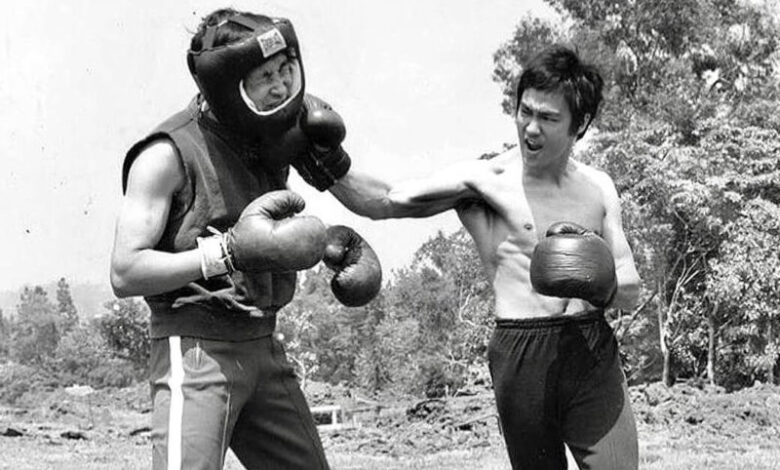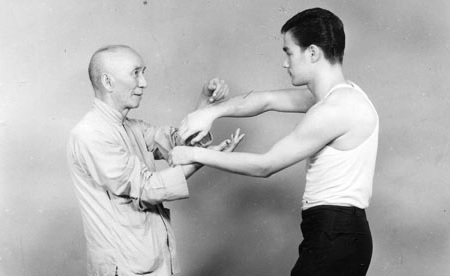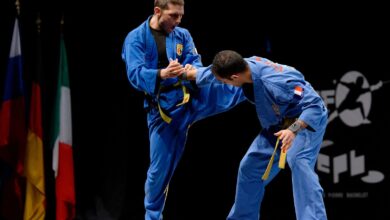The History of Jeet Kune Do: Bruce Lee’s Revolutionary Martial Art

Martial Arts: Jeet Kune Do (JKD) is a hybrid martial art and philosophy founded by Bruce Lee in the late 1960s. Unlike traditional martial arts, JKD is not a fixed style but an ever-evolving system based on efficiency, adaptability, and directness. It revolutionized combat sports and self-defense with its unique principles, blending techniques from multiple disciplines.
Origins and Development
Bruce Lee’s Early Martial Arts Training

Bruce Lee (1940–1973) began his martial arts journey with Wing Chun Kung Fu, studying under Ip Man in Hong Kong. After moving to the United States, he further explored various combat styles, including Western boxing, fencing, and traditional Chinese and Japanese martial arts.
The Birth of Jeet Kune Do
Dissatisfied with the rigid structures of traditional martial arts, Lee sought to create a system that focused on practical self-defense. In 1967, he formally established Jeet Kune Do, which translates to “The Way of the Intercepting Fist“—a concept emphasizing interception and counter-attacks.
Key Principles of Jeet Kune Do
Unlike classical martial arts, Jeet Kune Do is based on flexibility, adaptability, and efficiency. Its core principles include:
- Simplicity – Use the most direct techniques without unnecessary movements.
- Directness – Strike with purpose and effectiveness.
- Economy of Motion – Minimize effort while maximizing impact.
- Non-Classical Movement – Avoid rigid forms and embrace fluid motion.
- Absorb What is Useful – Adapt techniques from different martial arts that suit the practitioner.
- Intercepting the Opponent – Attack as the opponent prepares to strike.
Influences on Jeet Kune Do
Bruce Lee incorporated techniques from various martial arts into JKD, including:
- Wing Chun Kung Fu – Close-range combat, trapping hands, and centerline theory.
- Boxing – Footwork, jabs, and counter-punching.
- Fencing – Intercepting techniques and distancing.
- Muay Thai – Elbows, knees, and clinch fighting.
- Judo & Jiu-Jitsu – Throws, joint locks, and ground control.
- Karate & Taekwondo – High kicks and striking strategies.
The Evolution of Jeet Kune Do
Expansion and Controversy
After Bruce Lee’s passing in 1973, Jeet Kune Do continued to evolve through his students, such as Dan Inosanto, Ted Wong, and Taky Kimura. However, debates arose regarding the direction of JKD:
- Original JKD (Jun Fan JKD): Focuses on techniques and principles directly taught by Bruce Lee.
- JKD Concepts: An open-ended interpretation that incorporates modern martial arts.
Impact on Martial Arts and MMA
Jeet Kune Do has heavily influenced modern Mixed Martial Arts (MMA) and self-defense training. Lee’s emphasis on cross-training, adaptability, and effectiveness laid the foundation for the MMA philosophy seen today in organizations like UFC.
Training Methods in Jeet Kune Do
Training in JKD involves:
- Drills and Sparring – Live practice against resisting opponents.
- Footwork and Mobility – Learning to control distance and angles.
- Striking and Grappling – Balancing stand-up and ground techniques.
- Weapons Training – Kali sticks and nunchaku as part of self-defense.
Jeet Kune Do is more than just a martial art—it is a philosophy of self-expression and adaptability. Bruce Lee’s revolutionary approach changed the landscape of martial arts forever, promoting a mindset of evolution and practicality. Today, JKD continues to inspire martial artists and combat sports practitioners worldwide.



